This Star Wars hologram made history, and you can get one for free
Discover the history of holograms in films, and get one for free.
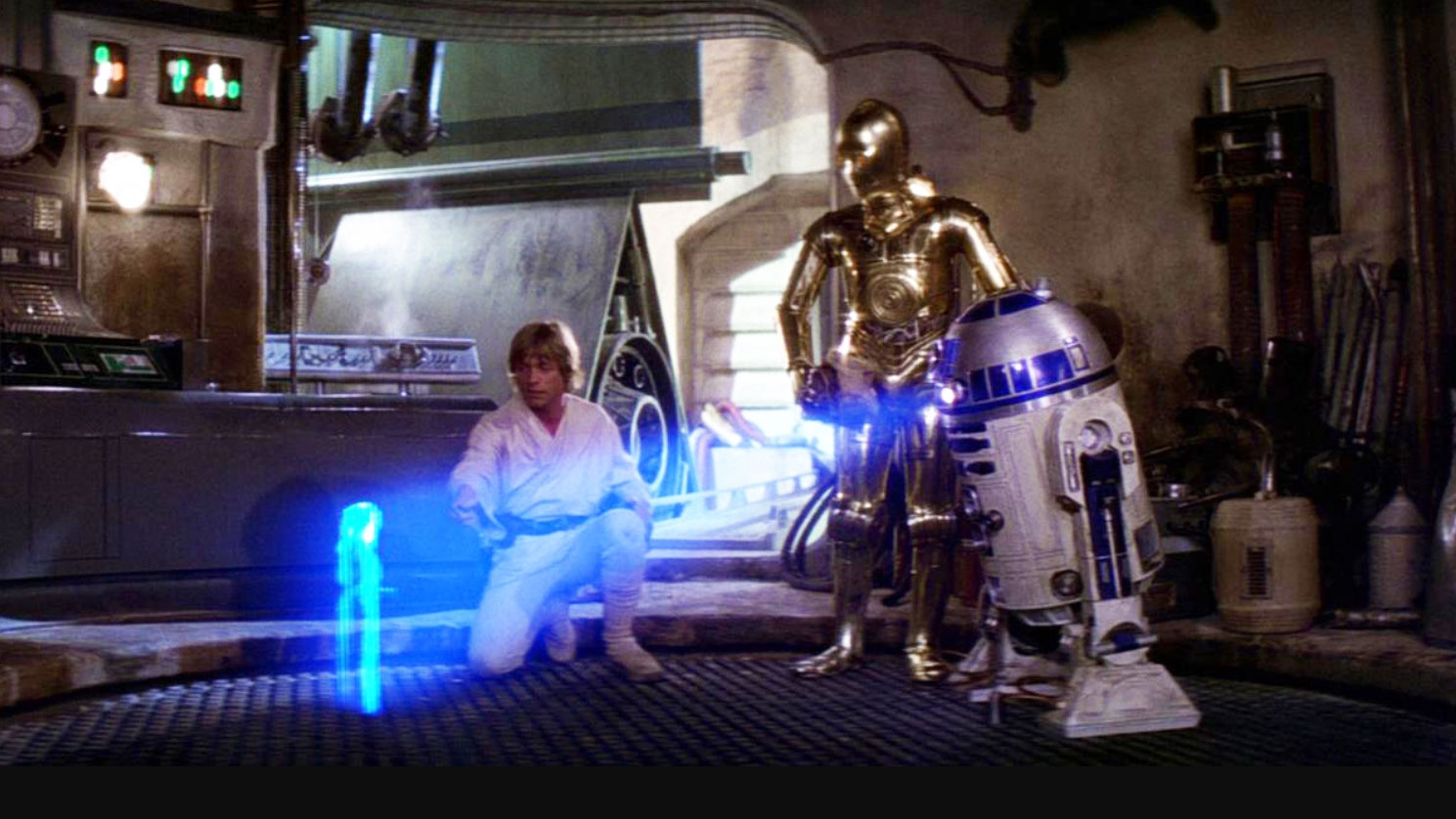
Happy Star Wars Day! This year, May the fourth is rather special, as this month marks 45 years since cinema-goers were introduced to the concept of holograms – thanks to a lowly moisture farmer in a galaxy far, far away. Rather than heading off to the Tosche Station to pick up some power converters, young Luke Skywalker became the recipient of eight words that changed his world – and ours right along with it.
Although Star Wars didn’t invent holograms, Star Wars: A New Hope educated the public on what holograms were, and more importantly, what they could be. Like flying cars and hoverboards, audiences accepted that it was an inevitable technology. It’s been a few years since the rebellion landed on Luke’s doorstep, but the image of a 3D Princess Leia made an indelible mark on the public. (Make your own Star Wars marks with these awesome Star Wars fonts).
To celebrate the 45th anniversary of Star Wars: A New Hope hitting cinemas, and the introduction of Princess Leia as a hologram, Arcturus Studios decided to commemorate the anniversary by creating a Princess Leia hologram of its own. You can access it by scanning the QR code found below. But first, as we are reaching a point where science fiction is becoming more science and less fiction, we look back at the history of holograms in pop culture.
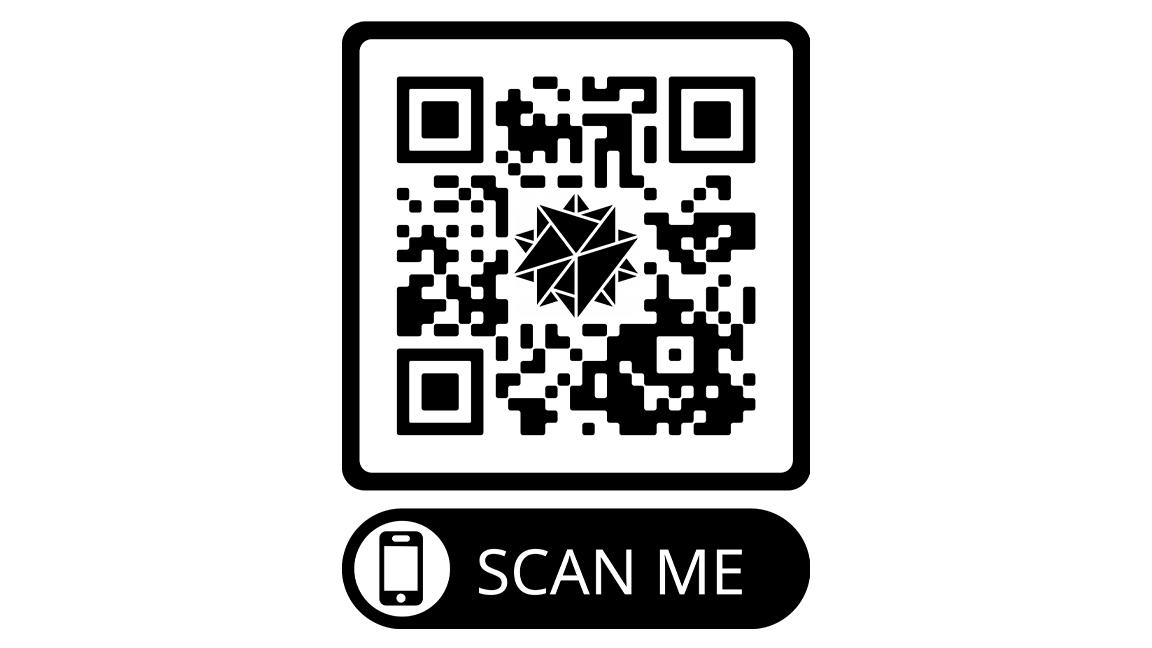
How does a hologram work?
A hologram begins with the beam of light emitted from a stabilised laser. As it travels, the light bounces off of something it is illuminating and creates an interference pattern, which is caused by overlapping lightwaves. That pattern is then recorded and, from that, a hologram can be produced. Naturally, there’s more to the science behind it, but that’s the basic idea.
Holograms can come in all shapes and sizes – from a simple image on an ID (including official seals added to make documents harder to copy) to bringing deceased musicians back to life to play Coachella (RIP Tupac). In fiction they’ve gone much further, but we are now starting to catch up.
Holograms in film
Although the recording of Leia (and the holographic chess game Dejarik that Chewy and R2D2 play) is arguably the earliest and most famous instance of a hologram on film, it wasn’t the first.
01. Zardoz (1974).
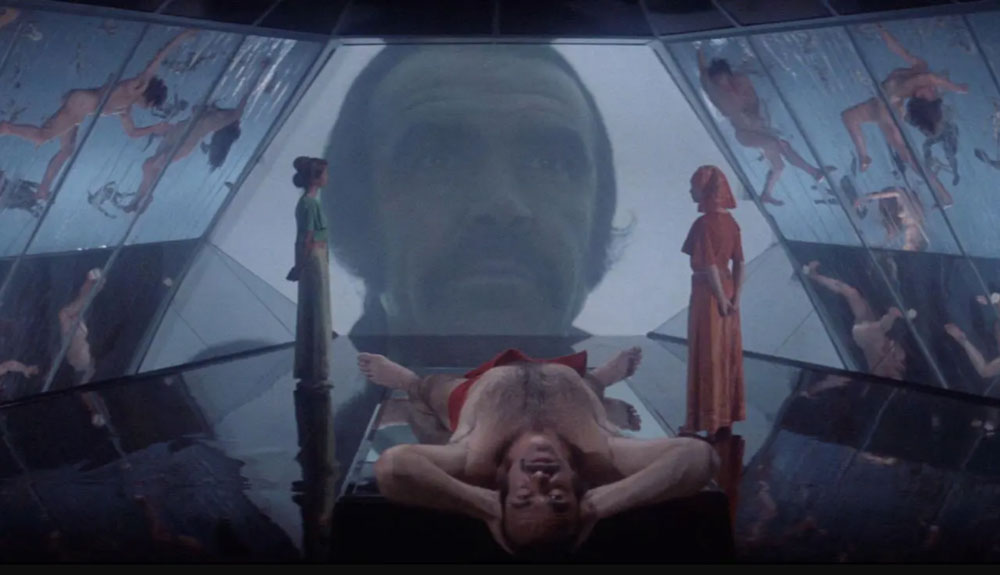
The 1974 John Boorman film, featuring a bizarrely dressed Connery and a confusing plot involving something about immortality and stone gods, is generally considered to be the first film to feature holograms, thanks to special rings shown to project holographic information. It’s not an especially auspicious beginning for holograms in a film that’s been lovingly called “cinematic garbage,” but all ideas need to begin somewhere.
Get the Creative Bloq Newsletter
Daily design news, reviews, how-tos and more, as picked by the editors.
02. Logan’s Run (1976)
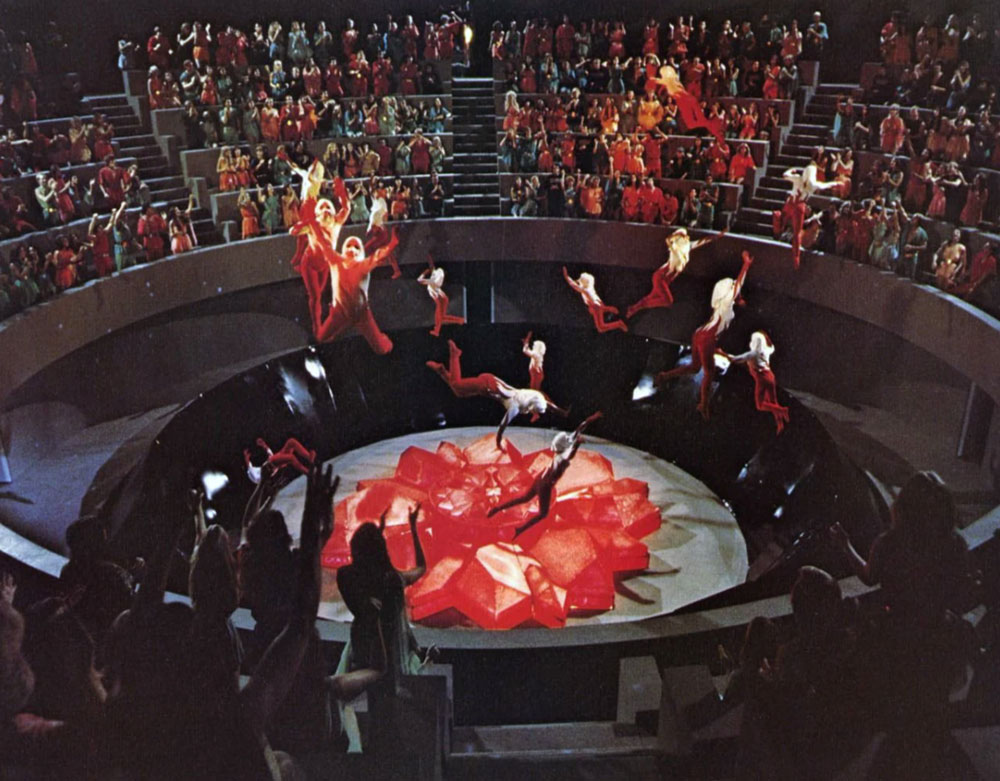
This film established another first: the first time an actor performed opposite a hologram.
Although significantly less hairy than Zardoz, Logan’s Run also featured a mix of post-apocalypse and futuristic tech. Unlike the earlier film where holograms simply conveyed information, in Logan’s Run they are used to represent something never seen before. During an interrogation, the character Logan (played by actor Michael York) has his mind split into multiple fragments, each represented by floating, rainbow-coloured versions of York’s head featured on screens located around the interrogation room. It was an outlandish scene, but the filmmakers took the idea of holograms seriously, enough so that they hired physicist Chris Outwater – one of the leading holographic scientists in the world at the time – as a consultant.
03. Star Wars: A New Hope (1977)
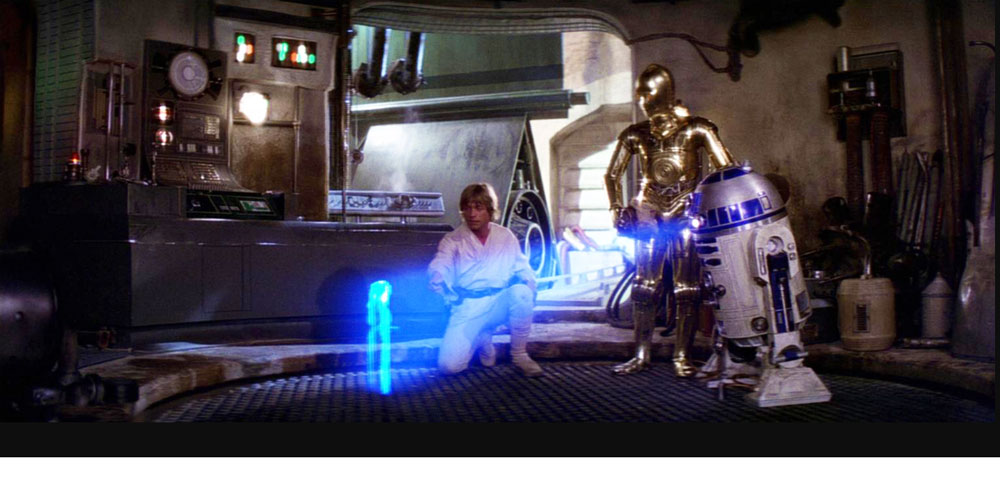
When this film hit the big screen, it quickly became a defining moment in pop culture. It was followed in 1980 by Star Wars: The Empire Strikes Back, which also used holograms as communication tools, giving the subject not physically in the scene a 3D avatar to speak with (and in one instance, see them get smashed by an asteroid). Holograms would become a recurring tool for the Star Wars filmmakers throughout the years, appearing on a regular basis for conversations between separated characters.
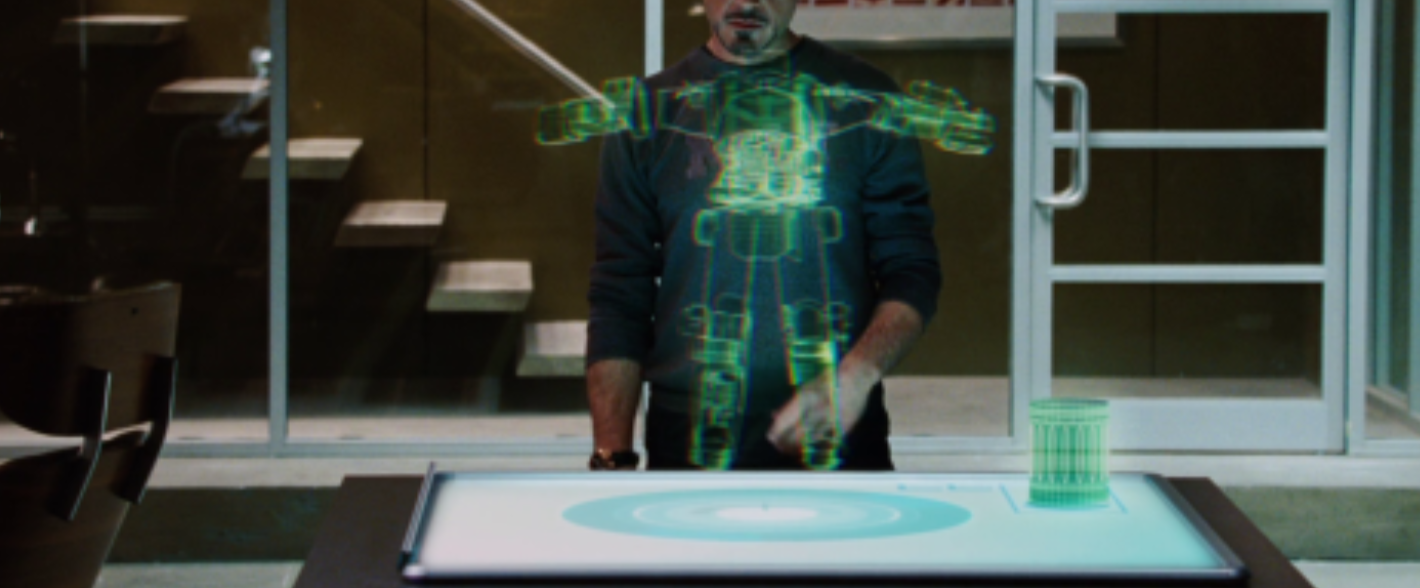
By the mid-'80s, holograms had become an accepted tool of the future, offering several potential uses. Whether it was Marty McFly cowering from a holographic Jaws promo in Back to the Future Part II, holographic store greeters in 2002’s Minority Report or holographic displays used to build superhero suits in 2008’s Iron Man, one thing is certain – holograms have very much become mainstream.
Holograms in the real world
Fictional examples of holograms in film and television are extensive, but they are starting to pop up in the real world too (well, sort of). The caveat being they have required a significant amount of setup, and there is some debate about whether or not they fully fit the true definition of a hologram. Technicalities aside, they can be spectacular.
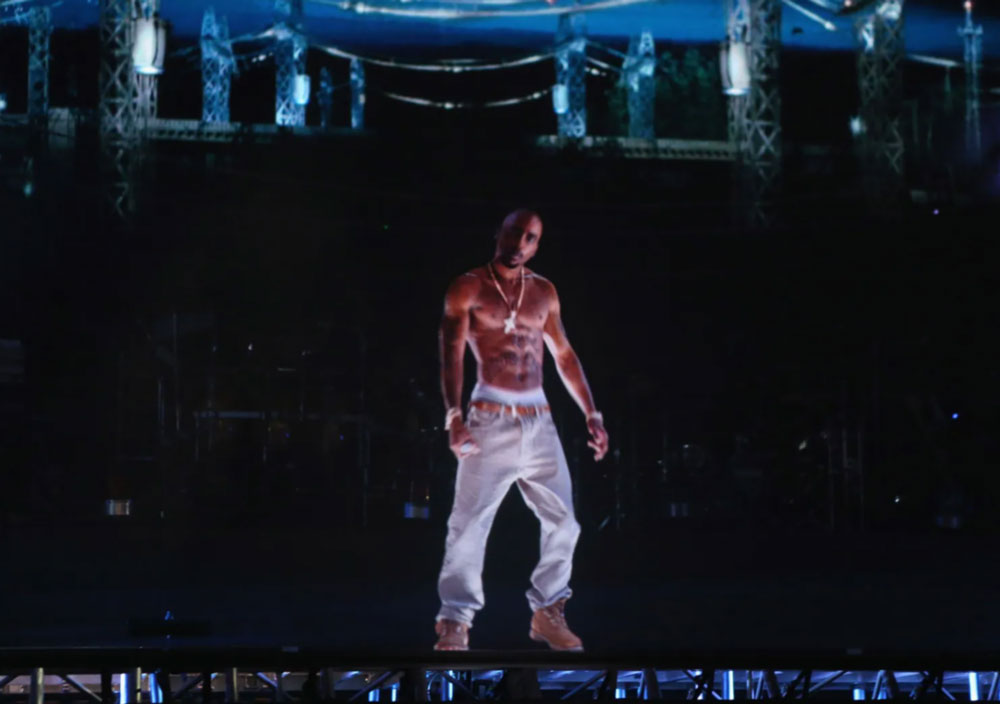
One of the best examples of holograms in the wild hit the public via Coachella in 2012, when a hologram of the long-deceased rapper Tupac Shakur took the stage. To create the first-of-its-kind performance, Oscar-winning VFX studio Digital Domain was called in to create a CG digital human recreation of the rapper (with the blessing of his estate). Artists used real-world reference materials to create a photoreal version of Tupac, down to the pores in his skin. Once the Tupac doppelganger was created, AV Concepts, the originator of the project hired by Dr. Dre, developed a way for him to appear in front of a crowd of thousands. But despite a (now deleted) press release that referred to the project as the “Tupac hologram,” it wasn’t really a hologram at all.
It was actually an old optical illusion known as ‘Pepper’s Ghost’, where an image is projected to a piece of glass at an angle, and that reflection can then be placed elsewhere to appear holographic. Still, the pomp and circumstance surrounding the presentation did its job, and digi-Tupac became a new high-water mark for what a hologram could be.
Create your own hologram
Given our current level of technology, arguably the best-known application for holograms at the moment is through augmented reality (AR). It’s not quite Princess Leia – Luke didn’t have to wear special glasses or use a mobile device to see the recording – but it has whet the public’s appetite for more.
To create a hologram, assuming you’re making the hologram of a person and not an object, you need to begin with a recording. There are two primary ways to do this.
01. Use a VFX studio
The first option is great if you happen to have a full VFX studio open to you. This method begins with a scan of the subject, either using a full motion capture tracking solution including facial capture, or just the facial capture (a body can be animated later, if needed). Artists using a full VFX pipeline of tools can then go in and touch up the data, making the subject into a photoreal hologram for use in a 3D environment. The data can be transmitted onto a series of light beams in order to ‘project’ the 3D data into the real world, but that is less Leia and more optical illusion.
02. Use volumetric video
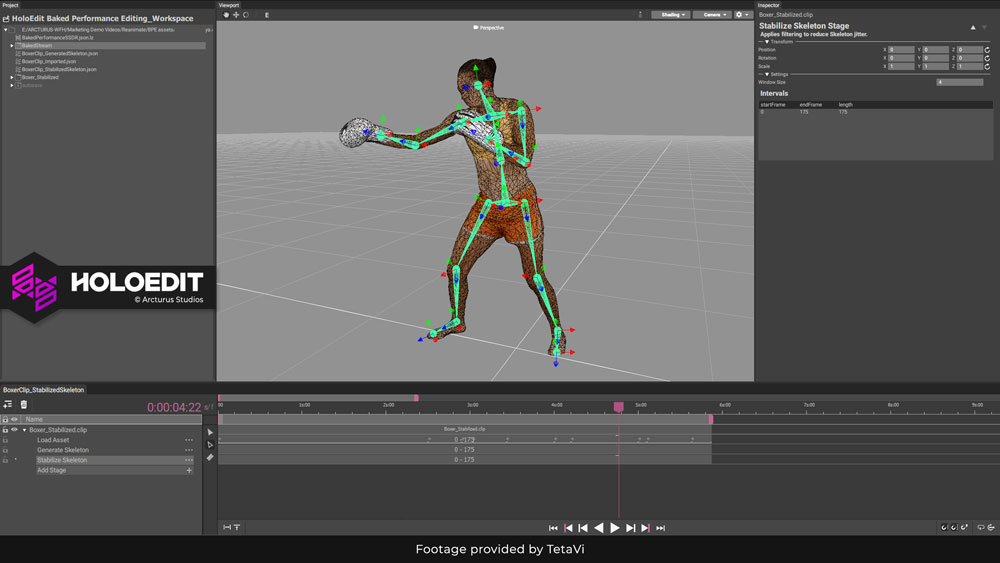
The other way to create a hologram is through volumetric video. This starts by taking a volumetric capture of the subject. The traditional method is through motion capture, but with the right equipment, the process becomes far more accessible. One of the fastest growing ways to take a volumetric capture is through LiDAR cameras, which are becoming increasingly available on commercial devices, including all of Apple’s new mobile devices.
Once the capture has been recorded, it can then be edited and eventually streamed using a single set of dedicated volumetric video tools, like the HoloSuite software from Arcturus. Users can edit the data in HoloEdit, and adjust the subject as needed, even moving the head around to create proper tracking. And thus, a 3D hologram is born.
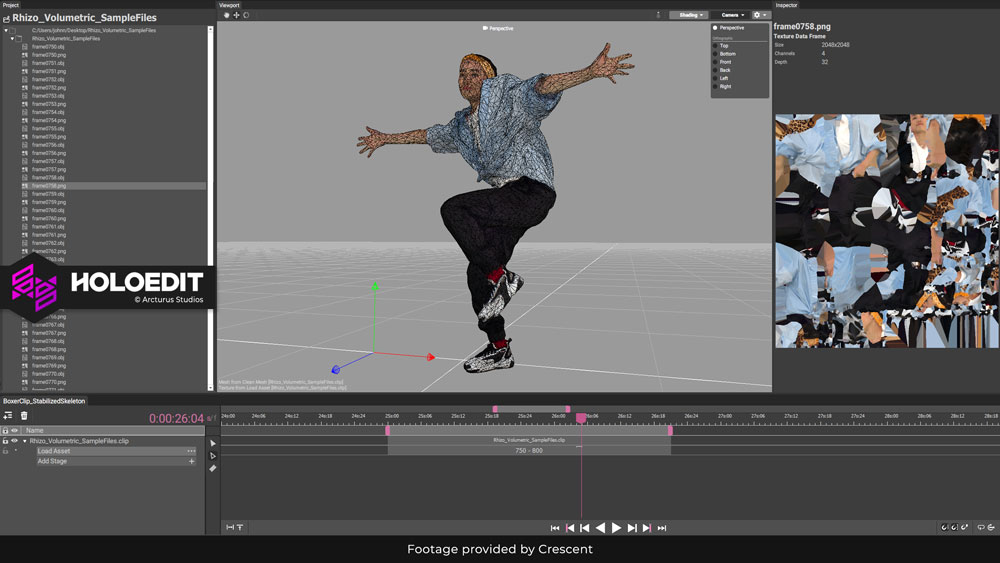
The finished file can then be uploaded into another tool, including game engines, or streamed directly to mobile devices. Holograms tend to hold a lot of information, so they are massive files, making them difficult to transmit. The HoloStream tool features adaptive streaming that adjusts to bandwidth, similar to what most major streaming platforms use, and it means you can watch directly on a PC or mobile device.
We’re not quite at the point where anyone can record their own holographic message on a droid, but volumetric video has opened the door for holograms in several industries right now, including e-commerce, VFX and game character creation, autonomous humans and more. The next step is to do it all in real time.
The evolution of holograms

Creating and streaming holographic content today is both possible, and becoming more common all the time. The trick, however, is to do it all in real time.
It’s one thing to record a live concert or a speech from a person then view the recording, but it’s another to experience that live. That requires a massive amount of computing power. That doesn’t mean it can’t be done – far from it, and companies like Intel are betting heavily on creating the next generation of hardware that can handle this – it just means it’s currently very expensive.
To witness the evolution of holograms, you may want to keep an eye on the future of sports. Modern stadiums all have dozens of high-quality cameras encircling the action, which means there is enough data being generated to capture everything in 3D. Using tools like HoloStream it can then be broadcast, but processing it all in real time is difficult. The software is there, we’re just waiting on the hardware costs to catch up – as they always do. And if a sporting event can be broadcast using volumetric principles and in real time, the ability to record yourself and communicate with others in real time isn’t far behind.
Read more excellent 3D content in 3D World, the world's best-selling magazine for CG artists. Subscribe to 3D World.
Read more:

Thank you for reading 5 articles this month* Join now for unlimited access
Enjoy your first month for just £1 / $1 / €1
*Read 5 free articles per month without a subscription

Join now for unlimited access
Try first month for just £1 / $1 / €1

Rob Redman is the editor of ImagineFX magazines and former editor of 3D World magazine. Rob has a background in animation, visual effects, and photography.
- Georgia CogganEditor
